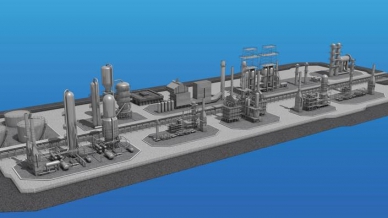
Advancements in thermocouple assemblies allow syngas plants to easily update their temperature measurement solutions for low temperature shift (LTS) applications. With improved monitoring of catalyst activity, syngas plants can maximize catalyst life and better plan for catalyst replacement – two qualities that reduce downtime and improve the bottom line. Is it time for a thermocouple replacement and upgrade?
Catalyst activity in syngas low temperature shifts (LTS) reactors depends heavily on temperature. An accurate and robust thermocouple assembly provides essential information about catalyst behavior to:
- Optimize performance.
- Ensure safe catalyst reduction.
- Predict catalyst events and catalyst bed life.
- Plan for catalyst end-of-run and replacement.
However, temperature data are only as good as the temperature measurement system in use. Plant operators should know the characteristics and limitations of each type of temperature sensor before deciding which one to use. This is particularly relevant for measurements in LTS applications, where temperature is a determining factor in catalyst reduction and activity. Temperature measurement systems that permit only a small number of measuring points – or one that limits the measuring points to certain areas, such as the inlet – may not provide sufficient and representative temperature information.
The latest technologies provide data on temperature gradients and radial spread temperatures. What’s more, thermocouple replacement – changing out a deficient thermocouple assembly with one that is more versatile and accurate – is a quick and easy process.
Think Radial Spread When Considering Thermocouple Replacement
Some applications may benefit from a higher level of temperature information than a simple gradient. In these cases, a radial temperature measurement system greatly increases the number of measurement points. Radial temperature measurements within the process give not only information about catalyst activity, but are also an excellent tool for diagnosing reactor maldistributions, hotspot formations, and channeling.
In 1987, Gayesco International – now a division of WIKA USA – introduced the Flex-R® multipoint thermocouple assembly, a breakthrough technology that has become the recognized standard for hydrocrackers around the world. This temperature measurement solution is made up of multiple flexible thermocouples to provide high measuring point density per nozzle. Each point is independent and can be routed anywhere in the reactor. The sensors’ small metal mass allows extremely short response times – 4 to 8 seconds – and real-time temperature readings. Gayesco Flex-R® thermocouples are protected by a heavy wall sheath and use large conductors, which make them sturdier and less prone to failure. They can be easily retrofitted in any reactor, and are an obvious choice for thermocouple replacement.
For more information about choosing the right thermocouple assembly and updating the temperature measurement system in your reactor, contact the experts at WIKA USA.
Click here to enter our interactive refinery to learn more about WIKA product applications.


